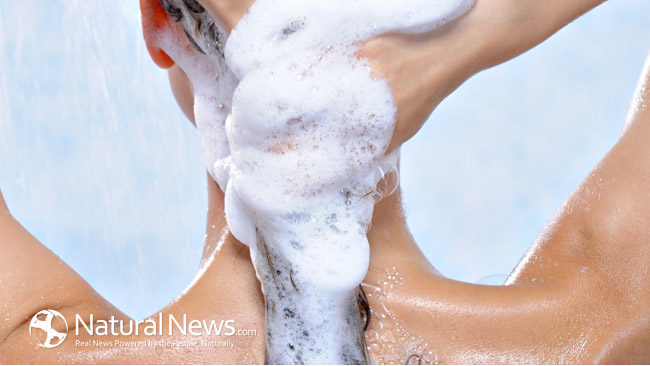It’s your shampoo. I know it smells nice, but at what cost? Let’s take a look at a few common ingredients in shampoo:
- Sodium Laryl Sulfate – This is what makes those awesome suds that power the shower mohawk! But it also strips your scalp of the good, natural oils and moisture. It has been named a skin irritant, and has been linked to cancer.
- Parabens – They are responsible for maintaining shelf life, but they are also linked to hormonal imbalances in the body and cancer.
- Fragrance – This can mean a hundred different things. Companies don’t have to disclose what chemicals they use to make the fragrance in the name of protecting their signature scents. To me, this is terrifying.
Along with these, there are too many other chemical ingredients that I can’t pronounce for me to feel confident that using traditional shampoos and conditioners was the right choice for my hair. These ingredients cause your hair to become co-dependent, relying on chemicals to do the work rather than producing and maintaining a healthy amount of oil.
Shampoo: A History
Shampoo:
- 1 Tbsp Baking soda
- 1 Cup Water
- Jar or other container (We put ours in a squeeze bottle like the kind you get at a beauty supply store)
Directions
- Put your baking soda in the cup, and take the cup with you to the shower to add your water there (you can pre mix it, but the water will most likely be cold when you pour it on your head, and I don’t like being cold).
- Shake or stir it up so the baking soda is all mixed with the water, and pour evenly all over your head.
- Scrub as normal, and rinse. Remember, this won’t suds up like normal shampoo, but that’s a good thing; suds are chemicals, and we don’t want those.
Conditioner:
- 2 Tbsp Apple Cider Vinegar (Organic is best)
- 1 Cup water
Directions
- Same deal, you can even use the same cup. Mix it up with the water and pour it evenly over your hair.
- I let mine sit for a few minutes, then rinse clean.
Some people only condition the ends, but I’ve found that conditioning my whole head gets me better results, and it helps make sure the baking soda is completely rinsed out.
There you have it! A safe, natural, ridiculously cheap way to keep your hair healthy and beautiful. Don’t be afraid to play around with the recipe, as everyone’s hair is a little different, so you may need to adjust the amount of baking soda/ACV that you use. If this is something you’ve been debating about trying, I want to encourage you to be brave, and just do it. This isn’t something you can just try for a few days, as your hair needs time to detoxify and adjust. Give it a month or two, and I’m confident you will love the results.





